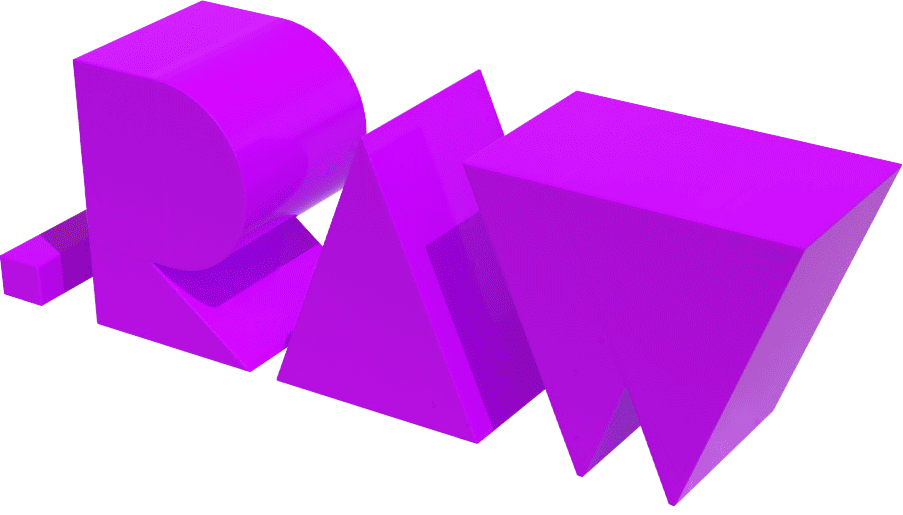
CONNECTING GEOGRAPHIES:
mapped presence
mapped presence
Interview participants:
Marjolijn Boterenbrood, artist, researcher
Malika Umarova, visual artist
Munara Abdukakharova, visual artist, architect
Zulya Esentaeva, visual artist
Marjolijn Boterenbrood, artist, researcher
Malika Umarova, visual artist
Munara Abdukakharova, visual artist, architect
Zulya Esentaeva, visual artist
Cover image: Marjolijn Boterenbrood, a sculptural trace of the roads from the maps used in the Letter to a Silk Road project
Interviewer: Ksenia Kopalova

In 2023, Marjolijn Boterenbrood drove her van from Amsterdam to Bishkek, carrying a stack of old Soviet maps that she reworked, incorporating elements of the Dutch landscape into them. In Kyrgyzstan, she invited artists to draw, paint, and add elements on top to reflect on the local landscape and their relationship with it. In an exhibition Connecting Geographies #5, she shows edited maps of 31 artists from Central Asia, her project Letter to a Silk Road, and new works resulting from her trip to Kyrgyzstan. In this interview Marjolijn and 3 of the artists participating in the project - Munara Abdukaharova, Zulya Esentaeva, and Malika Umarova - talk about their collaboration, mapping presence, and visualising personalised location narratives.

A drawing by Marjolijn Boterenbrood, made in an old Soviet atlas: a huge web of the former silkroads, as arteries on the continent or synapses in our brains lighting up
Finally I found a way to talk about it: to make work not about Kyrgyzstan, but about our connection
Ksenia
Could you tell a bit about the beginnings of this project - how did this collaboration start?
Marjolijn
I have been doing this project for four years. For me it started in Kyrgyzstan where I worked with botanists: as an artist I was asked to make drawings. When I got back, this project didn’t leave me, I kept thinking about it, and finally I found a way to talk about it: to make work not about Kyrgyzstan, but about our connection. That was when I found a Soviet atlas of Kyrgyzstan and made drawings about things we have in common. For example, I made drawings about the Silk Road that connects us.
One of the drawings was about a Dutch island, it was a drawing of water. We have a problem of rising water levels because of the melting glaciers in the North Pole. But in Kyrgyzstan, glaciers are the only sources of water - it is not the same problem, but it has to do with the same cause. In the same island I found depleted uranium, which could as well be found in Kyrgyzstan in the former mining sites. So I thought: what if I write a letter to the artists in Kyrgyzstan?
I met Malika when I was there for the first time, and joked about how I would bring this letter all the way to Kyrgyzstan, which I eventually did: I drove my van all the way to Kyrgyzstan and was met really nicely as a guest. Malika suggested that I drive the van into the exhibition, where I met Munara, Zulya, and all of the other wonderful artists that she organised the exhibition with. During the exhibition Ena Bena Sho which I was a part of, I conducted a workshop where I invited people to leave traces over my drawings. I had a chance to look through them properly only when I came back to the Netherlands, and thought it would actually be great to exhibit them, so I asked the girls if they can join me to make a collaborative exhibition about that.
Could you tell a bit about the beginnings of this project - how did this collaboration start?
Marjolijn
I have been doing this project for four years. For me it started in Kyrgyzstan where I worked with botanists: as an artist I was asked to make drawings. When I got back, this project didn’t leave me, I kept thinking about it, and finally I found a way to talk about it: to make work not about Kyrgyzstan, but about our connection. That was when I found a Soviet atlas of Kyrgyzstan and made drawings about things we have in common. For example, I made drawings about the Silk Road that connects us.
One of the drawings was about a Dutch island, it was a drawing of water. We have a problem of rising water levels because of the melting glaciers in the North Pole. But in Kyrgyzstan, glaciers are the only sources of water - it is not the same problem, but it has to do with the same cause. In the same island I found depleted uranium, which could as well be found in Kyrgyzstan in the former mining sites. So I thought: what if I write a letter to the artists in Kyrgyzstan?
I met Malika when I was there for the first time, and joked about how I would bring this letter all the way to Kyrgyzstan, which I eventually did: I drove my van all the way to Kyrgyzstan and was met really nicely as a guest. Malika suggested that I drive the van into the exhibition, where I met Munara, Zulya, and all of the other wonderful artists that she organised the exhibition with. During the exhibition Ena Bena Sho which I was a part of, I conducted a workshop where I invited people to leave traces over my drawings. I had a chance to look through them properly only when I came back to the Netherlands, and thought it would actually be great to exhibit them, so I asked the girls if they can join me to make a collaborative exhibition about that.

The works of the artists from Kyrgyzstan, Uzbekistan, and Georgia at De Balie, Amsterdam, made on top of the reworked maps from the Letter to a Silk Road project. These works transform the meaning of the original works, showing new narratives that are of importance the to artists.
In Bishkek, there are no institutions to support the artists, we often build something just by talking, sitting around the table, drinking tea
Malika
First I saw Marjolijn’s project ‘A letter to a Silk Road’, which really impressed me with how a personal journey informed the project and how there was a real letter that provided personal links between Amsterdam and Kyrgyzstan. So it was a meaningful experience when Marjolijn said she would bring it with her, and she really did, venturing on a 3-months long journey, while we were organising the exhibition and waiting for her.
When she suggested that we draw something on top of the drawings that Marjolijn did over old Soviet maps of Kyrgyzstan, I thought: is it really going to work? On top of her drawing of the night sky made on a map, I decided to draw something that is really important to me and to the artistic community in Bishkek. In Bishkek, there are no institutions to support the artists, we often build something just by talking, sitting around the table, drinking tea under a little lamp, - and I made a drawing of that.
First I saw Marjolijn’s project ‘A letter to a Silk Road’, which really impressed me with how a personal journey informed the project and how there was a real letter that provided personal links between Amsterdam and Kyrgyzstan. So it was a meaningful experience when Marjolijn said she would bring it with her, and she really did, venturing on a 3-months long journey, while we were organising the exhibition and waiting for her.
When she suggested that we draw something on top of the drawings that Marjolijn did over old Soviet maps of Kyrgyzstan, I thought: is it really going to work? On top of her drawing of the night sky made on a map, I decided to draw something that is really important to me and to the artistic community in Bishkek. In Bishkek, there are no institutions to support the artists, we often build something just by talking, sitting around the table, drinking tea under a little lamp, - and I made a drawing of that.

Malika Umarova, a cutout drawing made on top of a map reworked by Marjolijn Boterenbrood
What if the local knowledge is more important and valuable that the more universal one?
Marjolijn
Just to explain a bit: my drawing of the night sky was about the stars that we both see from the Netherlands and from Kyrgyzstan, and Malika overlaid a drawing of her own ‘universe’ on top of that.
Malika
Yes, it’s a very romantic drawing in a way, and it’s about this romanticism in the people around the table. All these maps are a kind of an alphabet of all the symbols, stories, and ideas that Kyrgyzstan could be. I am also teaching art to kids, and I’m trying to broaden representation, which was exactly what I did with this project, exploring all the symbols people associate with their home.
Munara
As for my take on it, I brought herbal tea from my house - something that we take when having colds and flu. It was made by a generational herbalist, whose mum, grandma were herbalists as well. All of these plants and herbs grow in the mountains. So my response was covering the map with Marjolijn’s drawing with the herbs - I glued them on top and called the map ‘Healing Mountains’.
Mountain paronama surrounds almost every landscape in Kyrgyzstan. All these herbal flowers on map grow in the mountains of Kyrgyzstan. I got to know a local man who is called “tabyp” in Kyrgyz, or “travnik” in Russian, which means 'a herbalist'. He holds a long lasting tradition and knowledge of flora in Kyrgyzstan. His grandma taught him. Sometimes I question myself: what if the local knowledge is more important and valuable than the more universal one or the knowledge that is not suitable for this particular context and place? I feel sad when so many people in Kyrgyzstan leave their places in search of money: they go for tough physical work abroad that does not require using the local knowledge they have and were brought up with. And what is even more sad is that these people will not transmit that knowledge to their kids - the knowledge of the place and space that they no longer live in.
It is interesting that the “travnik” noted that he collects herbs only in mountains, not in the city. These flowers are from the herbal tea he made for me, it helps for flu and colds. This man has a valuable local knowledge, and I hope he will continue his mission of bringing the knowledge to next generation.
Apart from that, I think mountains heal me when I'm hiking - not so much physically, but rather mentally. I see how nature lives without humans, the cycle goes and flowers bloom, trees grow. Sometimes there seems to be no life, like in the desert landscapes, but actually deserts are also home for many. That makes me think if humans would ever be able to value the cycle and stop these worlds from vanishing during the wars so brutal, and try to bring them back to these cycles, back to life, let people stay in their places and use their local knowledge towards their home, place and space.
Just to explain a bit: my drawing of the night sky was about the stars that we both see from the Netherlands and from Kyrgyzstan, and Malika overlaid a drawing of her own ‘universe’ on top of that.
Malika
Yes, it’s a very romantic drawing in a way, and it’s about this romanticism in the people around the table. All these maps are a kind of an alphabet of all the symbols, stories, and ideas that Kyrgyzstan could be. I am also teaching art to kids, and I’m trying to broaden representation, which was exactly what I did with this project, exploring all the symbols people associate with their home.
Munara
As for my take on it, I brought herbal tea from my house - something that we take when having colds and flu. It was made by a generational herbalist, whose mum, grandma were herbalists as well. All of these plants and herbs grow in the mountains. So my response was covering the map with Marjolijn’s drawing with the herbs - I glued them on top and called the map ‘Healing Mountains’.
Mountain paronama surrounds almost every landscape in Kyrgyzstan. All these herbal flowers on map grow in the mountains of Kyrgyzstan. I got to know a local man who is called “tabyp” in Kyrgyz, or “travnik” in Russian, which means 'a herbalist'. He holds a long lasting tradition and knowledge of flora in Kyrgyzstan. His grandma taught him. Sometimes I question myself: what if the local knowledge is more important and valuable than the more universal one or the knowledge that is not suitable for this particular context and place? I feel sad when so many people in Kyrgyzstan leave their places in search of money: they go for tough physical work abroad that does not require using the local knowledge they have and were brought up with. And what is even more sad is that these people will not transmit that knowledge to their kids - the knowledge of the place and space that they no longer live in.
It is interesting that the “travnik” noted that he collects herbs only in mountains, not in the city. These flowers are from the herbal tea he made for me, it helps for flu and colds. This man has a valuable local knowledge, and I hope he will continue his mission of bringing the knowledge to next generation.
Apart from that, I think mountains heal me when I'm hiking - not so much physically, but rather mentally. I see how nature lives without humans, the cycle goes and flowers bloom, trees grow. Sometimes there seems to be no life, like in the desert landscapes, but actually deserts are also home for many. That makes me think if humans would ever be able to value the cycle and stop these worlds from vanishing during the wars so brutal, and try to bring them back to these cycles, back to life, let people stay in their places and use their local knowledge towards their home, place and space.

Munara Abdukakharova, 'Healing Mountains', herbs and dry flowers on top of a map reworked by Marjolijn Boterenbrood
Marjolijn
I think that “Healing Mountains’ completely changed the content of the layer beneath it, the Soviet atlas, and brought this idea to the Netherlands. Zulya also made a beautiful response to the project with charcoal on her feet.
Zulya
Yes, but I didn’t use the map with Marjolijn’s drawing because I didn’t want to step on it. Stepping on something is not a really good thing to do in our culture. I just decided to make prints and since Marjolijn likes charcoal, I covered my feet with charcoal and left footprints, but I also asked the other artists to do the same.
I think that “Healing Mountains’ completely changed the content of the layer beneath it, the Soviet atlas, and brought this idea to the Netherlands. Zulya also made a beautiful response to the project with charcoal on her feet.
Zulya
Yes, but I didn’t use the map with Marjolijn’s drawing because I didn’t want to step on it. Stepping on something is not a really good thing to do in our culture. I just decided to make prints and since Marjolijn likes charcoal, I covered my feet with charcoal and left footprints, but I also asked the other artists to do the same.

Charcoal drawing by Zulya Esentaeva: 'We feel this country via our feet. We walk, we feel the earth, we experience space. Our body is the way to learn the country, our environment'
Zulya
Another map that I interacted with featured a bee - an essential part of our environment. So I collected some flowers from a school yard, with an idea to ‘feed’ the bees on Marjolijn’s map drawing.
Another map that I interacted with featured a bee - an essential part of our environment. So I collected some flowers from a school yard, with an idea to ‘feed’ the bees on Marjolijn’s map drawing.

Zulya Esentaeva, dry flowers from a school yard on top of a map reworked by Marjolijn Boterenbrood
Marjolijn
When I thought that bee colonies are 3 km in diameter, I realised that we are 2000 bee colonies apart from each other.
Ksenia
I really like how even in this comparison you are embracing alternative, more personal ways to relate to the space.
Marjolijn
Yes, and this personalised approach was especially evident in the workshops that the artists gave during the exhibition in the Netherlands. Munara, could you tell about yours?
Munara
The day after the opening I held a workshop on Kyrgyz embroidery. There are not too many well-written books on the subject, so a lot of information that I have on it was gained through talking to people who are still a part of this traditional culture. So here in Amsterdam I started with a short presentation about Kyrgyz embroidery. It’s interesting that in Bishkek normally 6-8 people would come to such presentations, whereas here in Amsterdam we had an audience of about 16. We were writing messages, manifestos, signs to talk about the current day situation in Bishkek, which is not great, politically: there are lots of civil rights issues at the moment. People cannot go out in the streets to protest. So this was my way of talking about it and sending a message to the world: everyone had a chance to embroider their message on a bag, t-shirt, - anything, really - using traditional Kyrgyz embroidery stitch, and the results were also shown in the exhibition.
When I thought that bee colonies are 3 km in diameter, I realised that we are 2000 bee colonies apart from each other.
Ksenia
I really like how even in this comparison you are embracing alternative, more personal ways to relate to the space.
Marjolijn
Yes, and this personalised approach was especially evident in the workshops that the artists gave during the exhibition in the Netherlands. Munara, could you tell about yours?
Munara
The day after the opening I held a workshop on Kyrgyz embroidery. There are not too many well-written books on the subject, so a lot of information that I have on it was gained through talking to people who are still a part of this traditional culture. So here in Amsterdam I started with a short presentation about Kyrgyz embroidery. It’s interesting that in Bishkek normally 6-8 people would come to such presentations, whereas here in Amsterdam we had an audience of about 16. We were writing messages, manifestos, signs to talk about the current day situation in Bishkek, which is not great, politically: there are lots of civil rights issues at the moment. People cannot go out in the streets to protest. So this was my way of talking about it and sending a message to the world: everyone had a chance to embroider their message on a bag, t-shirt, - anything, really - using traditional Kyrgyz embroidery stitch, and the results were also shown in the exhibition.
Embroidery workshop by Munara Abdukakharova
What if there was a friendlier way to cross the borders, or even live without them?
Zulya
And my workshop was about traditional Kyrgyz bread called borsoks - little pieces of very simple dough fried in lots of oil. We made it together with the workshop participants, young girls who were very excited about it all. As for the concept behind it - one of our artists, Nurperi, didn’t get a visa. For us it was a very difficult complicated process as well: we had to collect a lot of papers, it was very humiliating and frustrating, and I just wanted to imagine a world where visas would be like borsoks - something that shows hospitality. In Kyrgyz culture hospitality is very important, but I think it’s fairly universal to have some traditions of welcoming guests. But what if that existed not only on a family/individual level, but also at a level of the whole society? What if there was a friendlier way to cross the borders, or even live without them?
And my workshop was about traditional Kyrgyz bread called borsoks - little pieces of very simple dough fried in lots of oil. We made it together with the workshop participants, young girls who were very excited about it all. As for the concept behind it - one of our artists, Nurperi, didn’t get a visa. For us it was a very difficult complicated process as well: we had to collect a lot of papers, it was very humiliating and frustrating, and I just wanted to imagine a world where visas would be like borsoks - something that shows hospitality. In Kyrgyz culture hospitality is very important, but I think it’s fairly universal to have some traditions of welcoming guests. But what if that existed not only on a family/individual level, but also at a level of the whole society? What if there was a friendlier way to cross the borders, or even live without them?
Borsoks cooking workshop by Zulya Esentaeva
Malika
We also had a performance of mine, or a theatre play, where I was mixing stories that were passed along in my family from the 19th century onwards. I wanted to tell something important about me and my home through songs as well, so I made it into a little concert. I also brought a piano with me, - which I do not play in fact, but that day I really did! Some songs I made up, these ones featured lots of little stories about the participants of the exhibition as well. And during the performance I was also pointing towards specific parts of the exhibitions: like, ‘that’s the map of Kyrgyzstan’, for instance, making a link between the history and the moment-place-situation from which I was talking about it.
We also had a performance of mine, or a theatre play, where I was mixing stories that were passed along in my family from the 19th century onwards. I wanted to tell something important about me and my home through songs as well, so I made it into a little concert. I also brought a piano with me, - which I do not play in fact, but that day I really did! Some songs I made up, these ones featured lots of little stories about the participants of the exhibition as well. And during the performance I was also pointing towards specific parts of the exhibitions: like, ‘that’s the map of Kyrgyzstan’, for instance, making a link between the history and the moment-place-situation from which I was talking about it.
Performance by Malika Umarova
The digital aspect of the project made me think how we’re made to be the centre of the world again - with mobile phones
Ksenia
I see that the physicality of the space - both the exhibition space and the space you were talking about - was really at the core of the project. Also you were dealing with physical maps - objects hardly used these days. That’s why I was wondering if this experience was somehow different compared to connecting with a space through digital maps, which might be the most common way to think of a geographical location these days?
Marjolijn
One of the maps of Central Asia I used was made by a scientist from the 1100s, where Kyrgyzstan was placed into the centre of the world, mountains around, with Damascus seen on the side.
Looking at it, I had an idea of making a map of the world as seen from the moon, with a visibly thin layer of oxygen that we all have to live in. And when I travelled, I only saw that Google Earth point on my navigator as the ‘centre of the world’ - so we were back to the times of that ancient map, as opposed to the one where you imagine the whole globe. That was the digital aspect of the project that made me think how we’re made to be the centre of the world again - with mobile phones.
Generally though, I do not work with digital media, it’s usually something very physical like charcoal or charcoal powder. And all of the 31 artists’ responses to their surroundings and localities were very much about physical media as well - in a way they were all very personal and, in a way, for me they changed an idea of what cartography could be.
I see that the physicality of the space - both the exhibition space and the space you were talking about - was really at the core of the project. Also you were dealing with physical maps - objects hardly used these days. That’s why I was wondering if this experience was somehow different compared to connecting with a space through digital maps, which might be the most common way to think of a geographical location these days?
Marjolijn
One of the maps of Central Asia I used was made by a scientist from the 1100s, where Kyrgyzstan was placed into the centre of the world, mountains around, with Damascus seen on the side.
Looking at it, I had an idea of making a map of the world as seen from the moon, with a visibly thin layer of oxygen that we all have to live in. And when I travelled, I only saw that Google Earth point on my navigator as the ‘centre of the world’ - so we were back to the times of that ancient map, as opposed to the one where you imagine the whole globe. That was the digital aspect of the project that made me think how we’re made to be the centre of the world again - with mobile phones.
Generally though, I do not work with digital media, it’s usually something very physical like charcoal or charcoal powder. And all of the 31 artists’ responses to their surroundings and localities were very much about physical media as well - in a way they were all very personal and, in a way, for me they changed an idea of what cartography could be.

Marjolijn Boerenbrood, reworked map from a Soviet atlas.
Malika
Marjolijn has been working with maps for a long time now, and in her projects made throughout the time you can see this evolution of how spaces were conceptualised through maps. As for my own interest, I’m very excited about broadening the symbolic spectrum used to represent and imagine our country, and that’s why it was great to see so many tangible responses from different artists.
Marjolijn
When one thinks about Kyrgyzstan, one might imagine a far away place with very different people. But when I met these artists, and other artists from Tbilisi, I felt very much connected to these people - much more than I expected to.
Also, I remember the work by Nurperi, who didn’t get to make it to Amsterdam. It was about the family tree based on mothers’ names, rather than the fathers’ - like it is in a patriarchal patronymic system. This is very familiar in our environment as well.
Zulya
It was also very interesting how the exhibition was a living space that changed throughout the time it was on display. For instance, people were leaving some objects in it, some objects kept changing (like Munara’s embroidery which invited people to add bits of their own). When I made a workshop about borsoks, we left some of it in the exhibition as little sculptures. Multiple layers kept being added to the show as it went. Malika used a term ‘palimpsest’, - and it’s relevant not only to the maps in the project, but also to the entire exhibition.
Marjolijn has been working with maps for a long time now, and in her projects made throughout the time you can see this evolution of how spaces were conceptualised through maps. As for my own interest, I’m very excited about broadening the symbolic spectrum used to represent and imagine our country, and that’s why it was great to see so many tangible responses from different artists.
Marjolijn
When one thinks about Kyrgyzstan, one might imagine a far away place with very different people. But when I met these artists, and other artists from Tbilisi, I felt very much connected to these people - much more than I expected to.
Also, I remember the work by Nurperi, who didn’t get to make it to Amsterdam. It was about the family tree based on mothers’ names, rather than the fathers’ - like it is in a patriarchal patronymic system. This is very familiar in our environment as well.
Zulya
It was also very interesting how the exhibition was a living space that changed throughout the time it was on display. For instance, people were leaving some objects in it, some objects kept changing (like Munara’s embroidery which invited people to add bits of their own). When I made a workshop about borsoks, we left some of it in the exhibition as little sculptures. Multiple layers kept being added to the show as it went. Malika used a term ‘palimpsest’, - and it’s relevant not only to the maps in the project, but also to the entire exhibition.

Exhibits of the results of the workshops of Zulya Esentaeva and Munara Abdukakharova; images of the talk by Bermet Borubaeva about her research on the representation of coal workers in Kyrgyz fine art and her documentary Air Pollution.
Ksenia
The whole project, with its manually made, physical links between distant places, reminds me of mediaeval pilgrimage, which, arguably, did not involve being aware of the whole journey in measured distances in directions, but was rather a discrete, patchy movement from one spot to another, with spots being people (who among other things pointed towards the next point on the route) and experiences.
Marjolijn
Yes, this is very much what I felt when I was on my journey. It was very tiring, and very much about physical presence. Sometimes, when I stopped the car, a shepherd would approach me and point towards the next destination, and I vividly remember the feeling of immersing into the local soundscape, when you no longer hear only the car, when you stop the motor. I included this experience into one of the works in the exhibition. And what I think would be really beautiful is if all of the contributions to this exhibition made in Amsterdam could travel back to Bishkek, but that’s in the future.
The whole project, with its manually made, physical links between distant places, reminds me of mediaeval pilgrimage, which, arguably, did not involve being aware of the whole journey in measured distances in directions, but was rather a discrete, patchy movement from one spot to another, with spots being people (who among other things pointed towards the next point on the route) and experiences.
Marjolijn
Yes, this is very much what I felt when I was on my journey. It was very tiring, and very much about physical presence. Sometimes, when I stopped the car, a shepherd would approach me and point towards the next destination, and I vividly remember the feeling of immersing into the local soundscape, when you no longer hear only the car, when you stop the motor. I included this experience into one of the works in the exhibition. And what I think would be really beautiful is if all of the contributions to this exhibition made in Amsterdam could travel back to Bishkek, but that’s in the future.

Marjolijn Boterenbrood, 'Landscape of larks'
Ksenia
Speaking about the plans for the future, could you share some of yours? Do you see this project being taken further in your respective practices?
Malika
Since I work at school with kids, I’m always trying to think of ways to broaden their perspective on the arts. So I was thinking of approaching them similar to the way that Marjolijn did and asking to make their own drawings in response to the maps. That would be a new exercise.
Zulya
As for me, I’m not sure if I could repeat my workshop in Bishkek since it was so site-specific and oriented towards an audience in Amsterdam. But maybe I could make some poffertjes (Dutch batter cakes) with my artist friends!
Speaking about the plans for the future, could you share some of yours? Do you see this project being taken further in your respective practices?
Malika
Since I work at school with kids, I’m always trying to think of ways to broaden their perspective on the arts. So I was thinking of approaching them similar to the way that Marjolijn did and asking to make their own drawings in response to the maps. That would be a new exercise.
Zulya
As for me, I’m not sure if I could repeat my workshop in Bishkek since it was so site-specific and oriented towards an audience in Amsterdam. But maybe I could make some poffertjes (Dutch batter cakes) with my artist friends!
'Connecting Geographies #5', exhibition view
Munara
I met so many interesting people during this programme and exhibitions, so what I’m bringing home is probably discussions and thoughts.
Malika
Since the project develops so organically, we do not yet have a clear idea of what comes next, because, let’s say, a year ago I wouldn’t have thought I would be here, in Amsterdam. So - we’ll see where it goes!
Marjolijn
I very much hope that the talks and contacts we had in the program of the exhibition Connecting Geographies -with the curator, the landscape historian, the art historian, the artists, the writer and the journalist and all others- also will mean something for the future of the artists from Kyrgyzstan.
I met so many interesting people during this programme and exhibitions, so what I’m bringing home is probably discussions and thoughts.
Malika
Since the project develops so organically, we do not yet have a clear idea of what comes next, because, let’s say, a year ago I wouldn’t have thought I would be here, in Amsterdam. So - we’ll see where it goes!
Marjolijn
I very much hope that the talks and contacts we had in the program of the exhibition Connecting Geographies -with the curator, the landscape historian, the art historian, the artists, the writer and the journalist and all others- also will mean something for the future of the artists from Kyrgyzstan.








